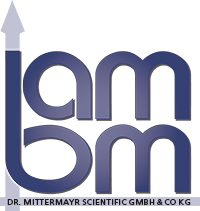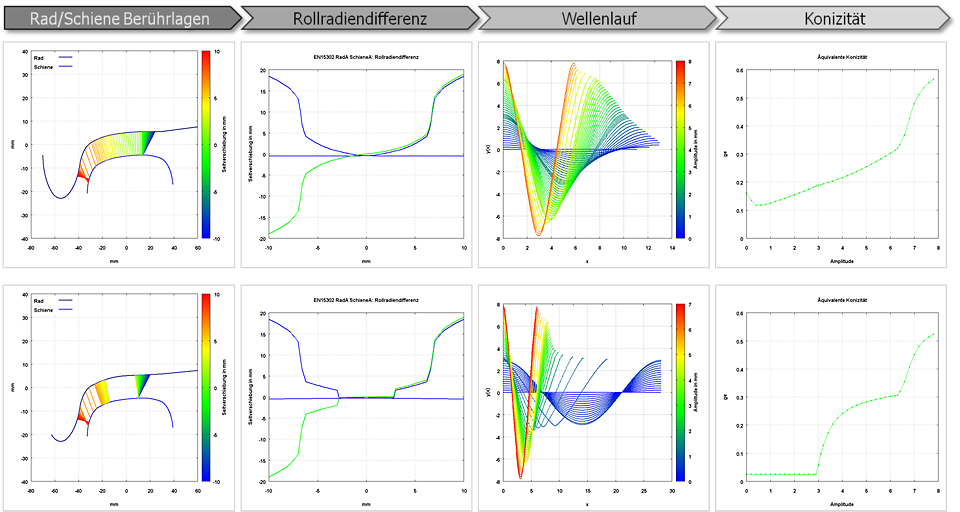QuiCon
Conicity and track geometry
There is more than one answer to the question how travelling performance is affected by track geometry. A comprehensive analysis requires time-consuming simulations with suitable programs. As the computational and data requirements are so high, we need to restrict our examinations to smaller sections. For a systematic evaluation, it turns out useful to look at the simpler issue of the geometric relations of the contact between wheel gauge and track cross section.
The important bearing function is primarily determined by the form fit of the tread gauges of wheel and track. More than 100 years ago, Klingel was the first to become aware of the fundamental influence of the running tread gauges on the motion of the rolling wheel set. This purely geometrical point of view constitutes the first attempt at examining an essential aspect of the behavior of railroad vehicles. The conical form of the wheel gauge and the rigid connection of the wheels by the axle shaft causes the wheel set to self-locate on the track. Comparing the behavior of a wheel set with real gauges on one hand to a double cone on the other provides the equivalent conicity as a measure.
For this purpose, the track cross-section data gathered by the track recording coach of the Austrian Railway Administration will first have to be smoothed before a geometrical survey is possible. Using an especially developed quick algorithm for computing the contact conditions between wheel and track, this problem can be solved online, even during the measurement, in real time.


